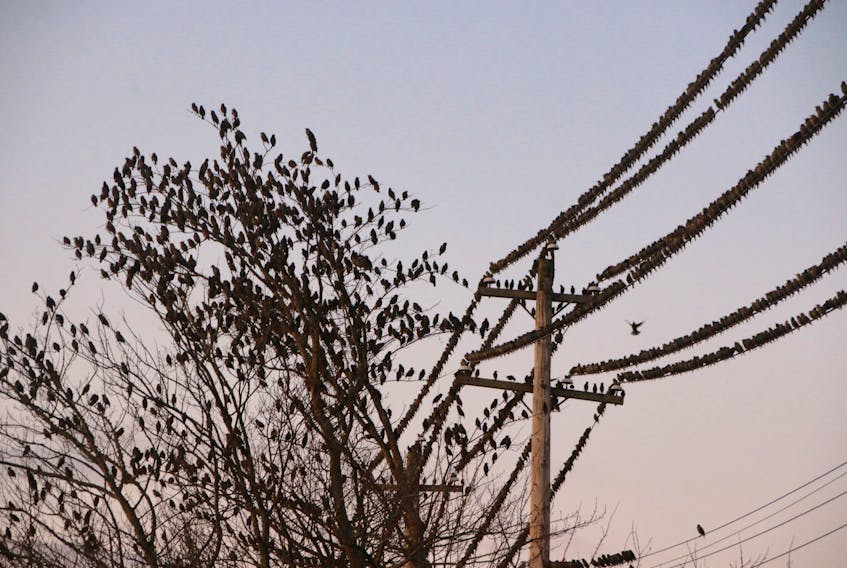TRURO, N.S. — Spectators were treated to quite the aerial exhibition recently, as thousands of starlings swirled through the early evening skies near the intersection of Willow Street and McClure’s Mills Road.
Starlings form large flocks called murmurations and resemble swarms as they fly off to their roosting sites.
“They’re through nesting and they’re often moving in flocks this time of year,” said Ross Hall, a retired wildlife biologist. “You often see huge flocks near farms and other places they can find feed, and they roam, so something might attract them to move to different areas at times."
Monday, at about dusk, the birds were lined up, virtually shoulder to shoulder on overhead wires. They populated a nearby tree in masses and also took up positions on overhead lines bordering the Home Hardware parking lot.
Hall said they’ll also gather if there’s a predator around.
A hawk has been spotted in the vicinity several times and was soaring through the sky above the nearby feed mill, including the evening the starlings decided to congregate.
“They gather in groups to provide security,” said Jason Dain, of the Nova Scotia Bird Society. “Lots of eyes make it safer for everyone and the large numbers confuse predators.”
Starlings are very chatty birds and it’s believed they also gather to share information.
The speed at which the murmuration can change direction is amazing. The birds are able to do this because they have extremely fast reflexes and follow the movements of those closest to them. If one changes direction, the others do the same, enabling them to fly at speeds of more than 30 km/h perfectly synchronized and without colliding.









